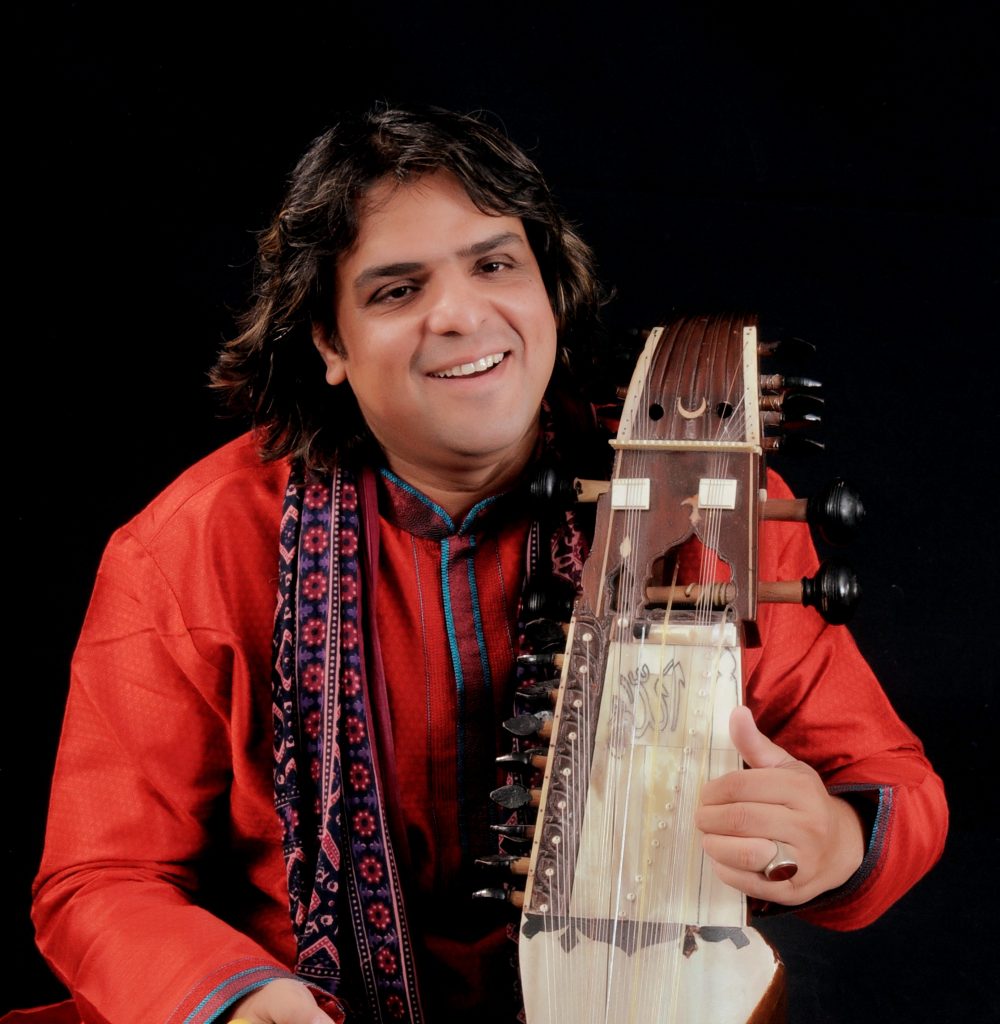A distinguished ‘Sarangi Nawaz’ and a virtuoso Us.Kamal Sabri comes from the Senia Gharana of Moradabad, that has been one of the prominent Gharana’s of Sarangi playing.Son of the legendary Sarangi Maestro Ustad Sabri khan, Kamal became a child prodegy as he made waves in the musical world at the tender age of 5. Today,he is regarded as one of the most seasoned Sarangi players,as his name reckons with the international cultural scene not only as a performer,but also as guest lecturer at several major Universites and music academies globally.
Talking about his musical lineage Us.Kamal says”I belong to the seventh generation of Muradabad Gharana of Sarangi, that bestows a distinguished lineage of many prominent Sarangi stalwarts namely Us.Chajju Khan,Us. Haji Mohammad Khan,who was the greatest Maestro of his time known for his finasse as a Sarangi Nawaz and also my father Us.Sabri Khan.My father was the first sarangi player to have received international acclaim popularising it in Europe & USA and became the first visiting professor of Washington University in Seattle to teach Indian music.He was the first sarangi player to incorporate sarangi with western violin in a duet with Sir Yehudi Menuhin in 1971 for All India Radio.He played for India’s independence celebration on 15 August 1945 and received several national awards.Most recently a postal stamp is being dedicated to him that is soon to be released by President of India.”
In the 13th century scriptures Sangeet Ratnakar and Sangeet Parijat, we find references about the ‘Pinaki Veena’ that was considered as a forefather intrument of sarangi.The present form of sarangi was evolved by Ustad Haider Baksh in the 15th century and eventually it came into being.Sarangi’ comes from the word ‘sau-rangi’ that is capable of creating 100 colours or Bhavs (emotions) across genres like Khyal,Thumri,Chaiti, Ghazal and even Classical and Jazz fusion today.
Sarangi is played both in ‘Tantkari’ and ‘Gayaki ang’ and Kamal’s repertoire involves both.It depends how the sarangi nawas incorporates one’s technique with the vocalist and the gayaki of different gharanas corresponding to their different styles of ‘Badhat’,Bandishes,Laykari and Taan elements,and this is the key element of the Moradabad Gharana as how to incorporate the gayaki ang with it’s characteristic taan styles.
Moradabad gharana have many variations and taans to play that include Madhya Phirat, Dogun, Teengun,Chaugun Taans and then Gamaks of various types, that are produced with different playing techniques.One of them is known as ‘Sapat taan’ of three octaves called ‘Gatte ki Taan’ with long bow played only with the hands,some gamaks are played with the bow only and are called ‘Gaz ki Taan’ and some taans are a combination of both gamaks and sargams played both with the bow and the hands on the stringed Pannell,this taan is called as ‘Gaz Gatte ki Taan’,that is the speciality of the Moradabad Gharana of sarangi, wherein the art requires blending of all elements to create a beautiful recital that enthralls the audience.
“Sarangi is a solo Instrument, but is perceived as an accompanying instrument,which is one of its greatest quality out of many,since most of the other instruments cannot be played to accompany,while sarangi’s sound bestows in it a unique closeness to the human voice,which actually represents the gayaki ang,in the true sense.Unfortunately sarangi had very few solo performances initially,but I’m trying my best to revive it,” says Sabri.
A Top graded artist of All India Radio,Kamal has have the privilege to be the youngest musician to participate in “Les 24 heures du raga” in Paris, where he played 9 concerts accompanying vocalists from cross genres enthralling the audience,while his stint at the ‘Art of the Bow’ festival in Geneva made him play a repeat concert.He has made India proud on several international platforms. As a composer he has delivered classically rich music scores for documentary films like ‘The Big Question’,’ Mystics of Sufism‘ and has composed for several orchestras namely ‘Indian Contemporary Music Orchestra’ and ‘Vienna contemporary orchestra’ and likes.
“Initially sarangi was considered to be a shadowed intrument used for deep sorrowful songs and Ghazals,but I tried to make it sound more enjoyable for both classical and western audiences.I incorporated it with Jazz and Blues tunes and created my album ‘sarangi funk’ a trans amalgamation,bringing it to the world music scene.In 2006 I came out with this unique album ‘Dance of the Desert’ that portrays sarangi as a lively instrument capable of enthralling people to dance on its tune,that was a revolutionary thought for sarangi and was much appreciated”elaborates Sabri.
Us.Kamal Sabri continues to explore the realm of music as most recently he recorded for an upcoming film ‘Jhansi ki Rani’, wherein his renditions display the purity of Indian music, yet with a global appeal.








